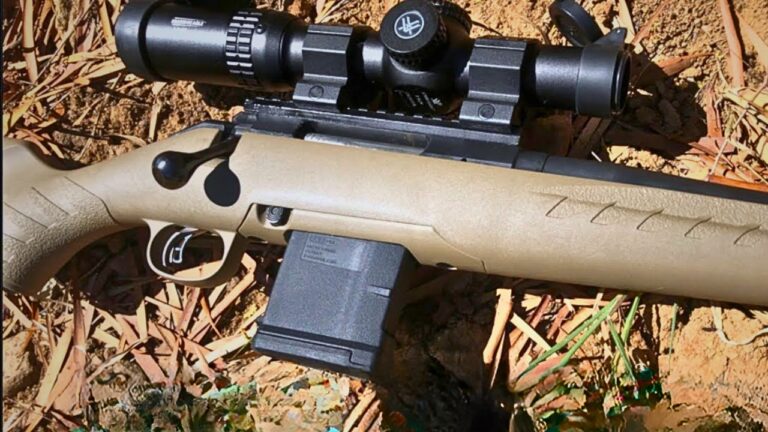Revolvers are known for reliability, but steady use over time exposes weaknesses in certain models. Heat, recoil, and wear on critical parts like the crane, cylinder lockup, and frame screws can cause issues. Once those tolerances shift, timing can suffer, and that solid, locked-up feeling disappears.
If you shoot a lot, especially with hotter loads, some revolvers simply won’t hold up without constant maintenance. Knowing which models develop problems early helps you avoid frustration and ensures your revolver stays dependable for the long haul.
Smith & Wesson Model 19

The Model 19 is a classic .357 Magnum, but heavy use eventually causes problems. Its K-frame design wasn’t built to handle a steady diet of hot magnum loads without loosening over time.
After extended shooting, you may notice side-to-side cylinder play or timing that feels slightly off. Frequent checks and screw-tightening can help, but if you’re putting thousands of rounds through it, the frame and internals will eventually show wear. Great revolver — but it performs best when treated with moderation.
Ruger SP101

The Ruger SP101 has a reputation for durability, but constant shooting with hotter .357 loads can eventually take its toll. The crane and cylinder lock can loosen over time, especially if maintenance gets skipped.
It’ll still outlast many revolvers in its size class, but high-round-count shooters often report slight rattles after heavy sessions. If you stick with .38 Special most of the time and reserve magnums for when they’re needed, you’ll extend its lifespan significantly and keep lockup feeling tighter for longer.
Colt King Cobra

The King Cobra is a strong revolver, but it’s not immune to wear. With steady use, the cylinder stop and hand assembly can start showing slack, leading to a looser feel and minor timing shifts.
Colt’s older lockwork, while smooth, demands more frequent tuning compared to modern designs. If you shoot high volumes, especially full-power .357 Magnum loads, plan on checking the action regularly. With proper care, it’ll last a long time, but ignore it, and you’ll notice a decline in consistency sooner than expected.
Taurus Model 66

The Taurus Model 66 is budget-friendly and offers solid performance out of the box, but its lockup and internal components don’t always hold up under heavy use. After extended shooting, cylinder wobble and screw loosening become common complaints.
If you keep up with regular maintenance, it’ll stay serviceable, but this isn’t a revolver that tolerates being pushed hard for thousands of rounds. It’s fine for moderate range time, but if you’re planning on a high-volume schedule, you’ll likely start chasing small rattles and lockup issues.
Smith & Wesson 642 Airweight

Lightweight revolvers like the S&W 642 are designed for carry, not for constant range punishment. Its aluminum frame and small parts handle recoil well enough for occasional shooting but start wearing faster under steady sessions.
Cylinder lockup can loosen, and the crane area sometimes develops play after prolonged firing. While it remains reliable for defensive carry, it’s not a revolver built for endless range days. If you shoot one frequently, give it consistent checks and be prepared to tighten things up from time to time.
Ruger LCR

The Ruger LCR is a popular lightweight revolver, but its polymer-aluminum hybrid frame isn’t invincible under heavy use. After thousands of rounds, users often notice slight looseness at the cylinder latch and frame junction.
It’s highly reliable when used as intended — a carry gun with limited range exposure — but steady high-volume shooting accelerates wear. If you want to make it last, stick to moderate loads and clean it thoroughly after every session. It’s durable for its weight, but constant abuse shortens its life.
Charter Arms Undercover

The Charter Arms Undercover is affordable and handy, but its design sacrifices some long-term durability. After steady use, small parts like the ejector rod, cylinder stop, and frame screws tend to loosen, causing a slight rattle.
It’s fine for light practice and carry, but you’ll want to keep an eye on lockup and timing if you’re putting hundreds of rounds through it regularly. The upside is that maintenance is straightforward, but without it, you’ll start seeing issues much earlier than with higher-end models.
Colt Detective Special

The Colt Detective Special is an iconic revolver, but older designs weren’t built for constant range work. Continuous firing, especially with hotter loads, can loosen the sideplate screws and cause minor cylinder play.
This revolver shines as a carry gun or occasional shooter, but it needs regular inspection to maintain timing. A quick tune-up can keep it performing, but if you’re looking for something to handle relentless sessions, you’ll find its tolerances start drifting after enough rounds. With care, though, it’ll stay serviceable.
Rossi Model 971

The Rossi Model 971 is a solid budget .357, but under steady shooting, especially with magnums, the action loosens noticeably faster than higher-end competitors. Cylinder gap widening and side play are common long-term complaints.
It performs well within its limits, but you’ll want to stay on top of maintenance if you plan to put serious range time on it. Checking screws, cleaning regularly, and moderating ammo choices all help extend its life. Without that attention, you’ll likely hear and feel looseness early.
Smith & Wesson Model 60

The S&W Model 60 has been a go-to stainless snub-nose for years, but prolonged exposure to magnum loads accelerates wear on its lockup and internal components. Over time, the cylinder stop can develop play, and timing issues may creep in.
It’s incredibly versatile when used for carry and moderate shooting, but if you treat it like a range workhorse, expect to schedule tune-ups sooner than later. With proper care and regular inspections, though, the Model 60 can still deliver dependable performance for many years.
*This article was developed with AI-powered tools and has been carefully reviewed by our editors.






